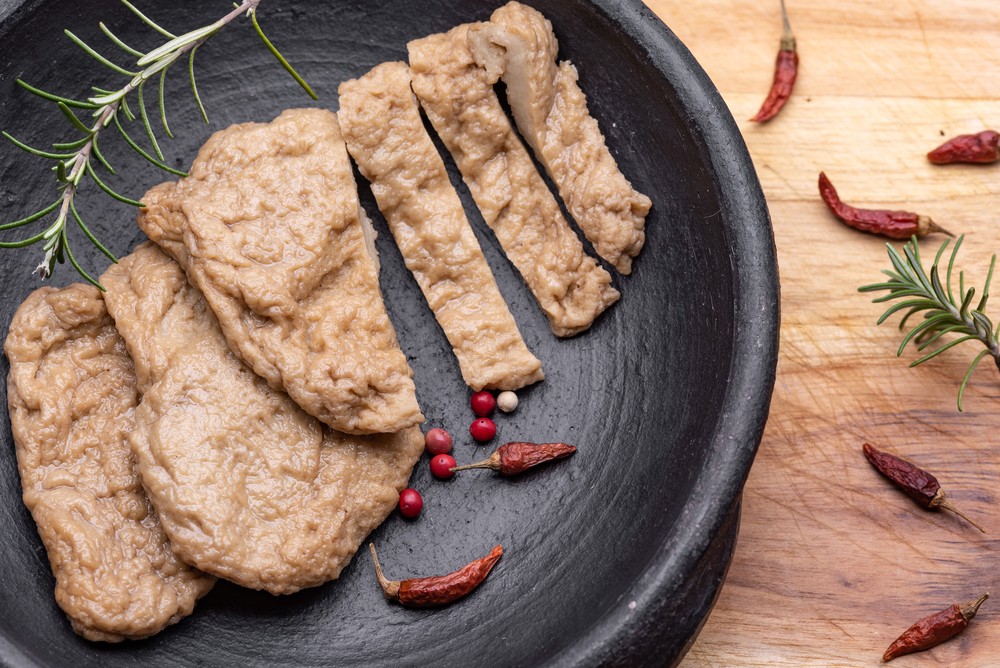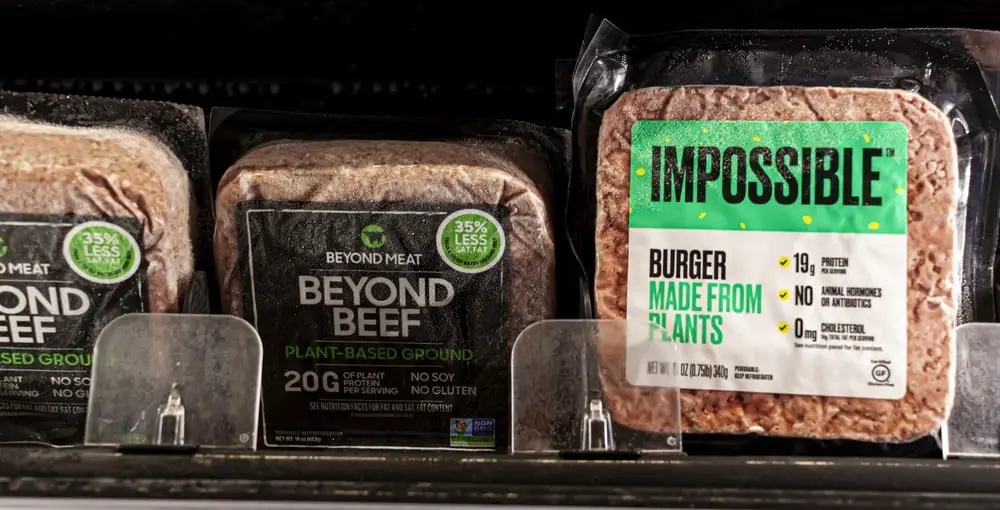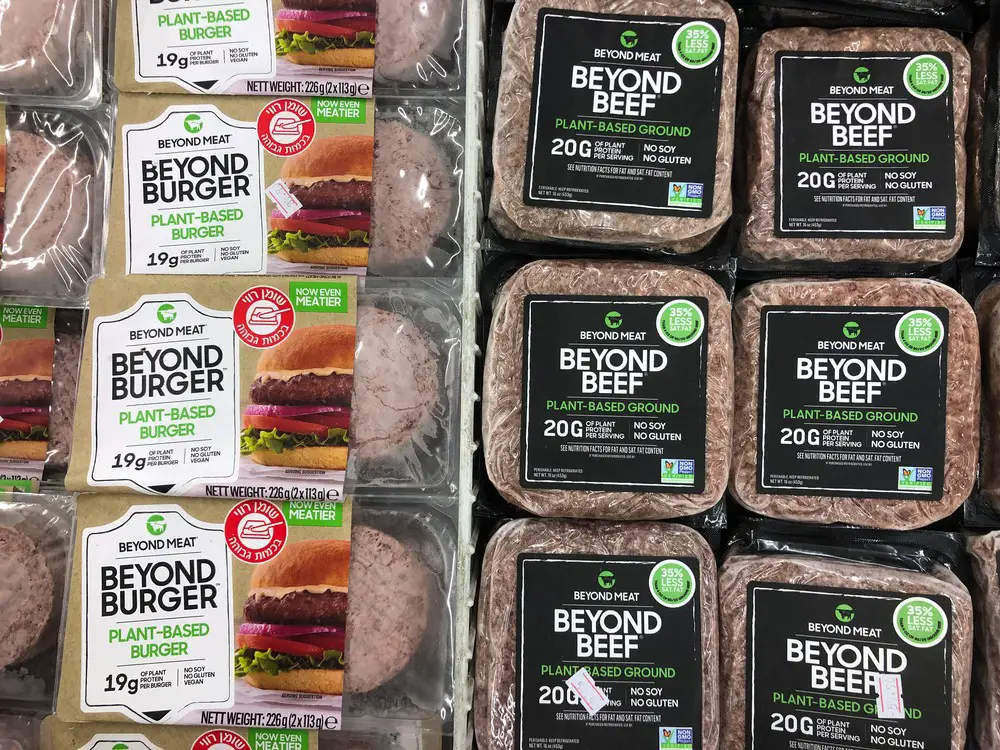Have you ever wondered if you can eat plant-based meat raw, just like a fresh salad? Many people are switching to plant-based diets and might think about this. One interesting fact is that plant-based meats are made from ingredients like pea or soy protein, which aren’t raw because they’ve been processed.
This article will guide you through the safety and nutritional aspects of eating plant-based meat raw versus cooked. You’ll learn how to handle and cook these products safely for your meals.
Keep reading to find out!
Raw Plant-Based Meat: Is It Safe?

Plant-based meats, crafted mainly from pea or soy protein along with fats and binders, pose a unique question regarding their raw consumption.
While some plants can be eaten raw safely, the process and composition of these meat alternatives introduce potential risks for foodborne illnesses.
It is essential to handle and cook plant-based meat safely to prevent foodborne illness.
Contamination during handling and processing could make eating these products raw a health hazard. Unlike traditional meat, where guidelines are clear-cut, the safety standards for consuming plant-based meats still need to be explored.
Ensuring thorough cooking mitigates these risks and enhances nutritional benefits by making it easier for the body to absorb nutrients effectively.
The Risks of Eating Raw Plant-Based Meat
Certain plant-based meats should not be consumed raw due to potential contamination risks during handling and processing. Unlike fruits and vegetables, often eaten without cooking, plant-based meats involve a more complex manufacturing process.
This process includes mixing pea or soy protein with fats and binders, creating a product that mimics the texture of animal meat. Since these ingredients undergo various stages of handling, there’s an increased risk for bacteria and other pathogens contaminating the product.
Cooking plant-based meat thoroughly is essential to ensure safety from foodborne illnesses. Cooking kills harmful bacteria that might have been introduced during production or packaging.
Consumers often think that because these products are plant-based, they are automatically safe to eat in any form. Yet, just like traditional meats, proper cooking is crucial for health and safety reasons.
Following recommended cooking guidelines ensure your meal is safe and enhances the flavor profile of the vegan meat alternatives you enjoy.
Proper Cooking Techniques for Plant-Based Meat

Plant-based meat alternatives have gained significant popularity in recent years, offering a sustainable and cruelty-free alternative to traditional animal-based products. While these meat substitutes are designed to mimic the taste and texture of real meat, it’s essential to understand the proper cooking techniques to ensure a safe and delicious meal.
Unlike their animal-based counterparts, plant-based meats often require different handling and preparation methods.
One of the most crucial considerations when cooking plant-based meat is temperature control.
Many plant-based products are made from a combination of plant-based proteins, such as soy, wheat, or pea proteins, and other ingredients like coconut oil or methylcellulose. These ingredients can react differently to heat compared to animal proteins, potentially altering the texture and flavor of the final product if not cooked correctly.
It’s generally recommended to follow the cooking instructions provided by the manufacturer for optimal results. Many plant-based meat products, such as grilling, pan-frying, or baking, are designed to be cooked similarly to their animal-based counterparts.
However, paying close attention to cooking times and temperatures is essential, as overcooking can lead to a dry, rubbery texture while undercooking may leave the product unappetizingly raw.
By mastering the proper cooking techniques for plant-based meat alternatives, you can enjoy a delicious and satisfying meal that aligns with your dietary preferences or lifestyle choices.
Remember to follow the manufacturer’s instructions, pay attention to cooking times and temperatures, and experiment with different cooking methods to find the perfect preparation for your favorite plant-based meat products.
Delicious Recipes for Cooked Plant-Based Meat

Exploring delicious recipes for cooked plant-based meat opens up a world of flavor while ensuring your meals are nutritious and sustainable. Here are some compelling options to make you rethink everything you know about vegan meat consumption.
Based Meatloaf
Start with a pea or soy protein meat base, adding diced onions, breadcrumbs, ketchup, and a mix of spices. Shape it into a loaf and bake until it’s beautifully browned on the outside. This dish offers comfort food vibes with all the benefits of plant-based nutrition.
Spicy Vegan Meat Tacos
For a fiery filling, use plant-based ground meat seasoned with chili powder, cumin, garlic, and onion. Serve in corn tortillas with fresh salsa, avocado slices, and lime wedges for a zesty meal with flavor and nutrition.
Based Meatballs
Mix plant-based ground meat with Italian seasoning, bread crumbs, flax eggs (ground flaxseed mixed with water), and finely chopped parsley. Roll into balls and cook until golden brown—simer in your favorite marinara sauce for an added layer of taste.
Stuffed Peppers
Fill bell peppers with a hearty mixture of plant-based ground meat, rice, tomato sauce, garlic, and seasonings. Bake until the peppers are tender and the filling is hot throughout. This dish combines various textures for an irresistible dining experience.
Exploring the Health Benefits of Cooked Plant-Based Meat
After discovering delicious recipes for cooked plant-based meat, let’s delve into this option’s health benefits. Cooking plant-based meats brings out their best in terms of taste and nutrition.
These vegan meat alternatives, often made from pea or soy protein, are packed with essential nutrients beneficial to your health. They provide a great source of fiber while being lower in fat and calories compared to traditional meats.
Cooked plant-based meats can be a cornerstone of a healthy diet, offering more fiber and less fat.
This approach ensures you get meals rich in proteins without high saturated fats in animal products. Choosing cooked plant-based meat over raw variants reduces potential risks from contaminants and maximizes nutrient absorption and digestion.
This makes them an excellent choice for those looking to maintain a balanced diet while reducing their environmental impact.
The Nutritional Value of Cooked vs. Raw Plant-Based Meat

When considering the nutritional value of cooked versus raw plant-based meat, it’s clear that cooking these products can enhance their nutritional profile in several ways.
First, it’s important to note that most plant-based meats are designed to be cooked. Cooking not only ensures safety from pathogens but can also make nutrients more bioavailable.
For instance, proteins in plant-based meats may become more digestible once cooked.
Cooking can denature protein structures, making it easier for the body to break them down and utilize the amino acids they contain. This is especially relevant for plant-based proteins, which may have different digestibility levels than animal proteins due to their original form and anti-nutritional factors like lectins and phytates.
These compounds, which can bind to nutrients and reduce their absorption, are often reduced or eliminated through cooking.
Moreover, cooking can enhance the flavor and texture of plant-based meats, making them more palatable and enjoyable to consume. Thus, cooking can indirectly encourage the intake of these nutritious foods.
While the notion of eating something akin to raw meat might seem appealing from a convenience perspective, the reality is that the culinary process is crucial for these products to deliver their full nutritional and sensory potential.
Finally, it’s worth noting that the nutritional content of plant-based meats can vary significantly depending on the ingredients used and the processing methods.
While the focus often lies on protein content, these products can also be good sources of fiber, vitamins, and minerals, especially when made with whole food ingredients like beans, lentils, and vegetables.
However, the presence of vitamins and minerals can also be influenced by cooking, with some nutrients becoming more available and others potentially being lost in the cooking process.
While raw plant-based meats might be technically edible in some cases, cooking these products is essential for safety, digestibility, and nutrient availability.
The cooking process transforms these ingredients from simple alternatives to genuinely nutritious and enjoyable components of a balanced diet, aligning with the principles of health and sustainability that often motivate plant-based eating.
How to Incorporate Cooked Plant-Based Meat into Your Diet
Incorporating cooked plant-based meat alternatives into your diet can be an exciting and delicious way to embrace a more sustainable, environmentally friendly lifestyle.
With the growing popularity of these meat substitutes, it’s becoming easier than ever to find various options that cater to different dietary preferences and cuisines. However, it’s essential to integrate plant-based meats into your meals thoughtfully and well-informedly.
One of the first steps in successfully incorporating cooked plant-based meat into your diet is to familiarize yourself with the different types and brands available.
Each variety offers a unique taste and texture profile, from soy-based products to those made with pea or wheat proteins. Experiment with different options to find the best suits your preferences and the dishes you plan to prepare.
When cooking plant-based meat alternatives, following the manufacturer’s instructions is crucial. Many of these products are designed to mimic the cooking properties of traditional meat, but they may require slightly different temperatures, cooking times, or preparation methods.
For instance, some plant-based burgers or ground “meat” products may need to be cooked slightly lower to prevent drying out or becoming rubbery.
As you begin incorporating cooked plant-based meats into your meals, consider using them as a direct substitute for animal-based proteins in your favorite recipes.
Plant-based ground “beef” can be used in dishes like tacos, chili, or spaghetti sauce, while plant-based chicken or beef strips can be incorporated into stir-fries, fajitas, or curries. Feel free to experiment and adjust seasonings or cooking times to achieve the desired flavor and texture.
Incorporating cooked plant-based meat alternatives into your diet can be a rewarding and delicious journey. With creativity, patience, and an open mind, you can create satisfying and nutritious meals that align with your values and dietary preferences.
Remember to experiment, follow proper cooking instructions, and pair your plant-based proteins with various other nutrient-dense plant-based foods for a well-rounded and enjoyable eating experience.
Raw vs. Cooked: Which is Better for Plant-Based Meat?

Whether raw or cooked plant-based meat is better depends on your health goals and taste preferences.
Processing Methods
Processing methods for plant-based meat involve combining ingredients like pea or soy protein, a type of fat, and binders to mimic the texture and flavor of traditional meat. Manufacturers use advanced technology to ensure these vegan meat alternatives offer a satisfying taste and nutritional value.
They carefully control temperature and mixing techniques to create a product that’s both safe and enjoyable to eat.
Safety standards are rigorous during production, aiming to eliminate contamination risks. This focus helps protect you from foodborne illnesses often associated with improper handling of raw materials.
By cooking at precise temperatures, plant-based meats achieve the right balance between health benefits and culinary delight, making them an excellent choice for those who want to reduce their environmental impact while enjoying delicious meals.
Ingredients
Plant-based meats are primarily made from pea or soy protein, accompanied by various types of fats and binders to mimic the texture and flavor of traditional meat.
This combination offers a nutritionally superior alternative, packing more fiber, less fat, and fewer calories than their animal counterparts.
Manufacturers also incorporate spices and natural flavors to enhance taste profiles, catering to those adopting a vegan lifestyle without sacrificing the experience of enjoying “meat.” These ingredients contribute to the overall sensory appeal and align with health-conscious consumers’ goals for maintaining a balanced diet.
By carefully selecting these components, plant-based meats stand at the forefront of innovation in meat alternatives, attempting to lessen environmental impacts while providing nutritional benefits.







